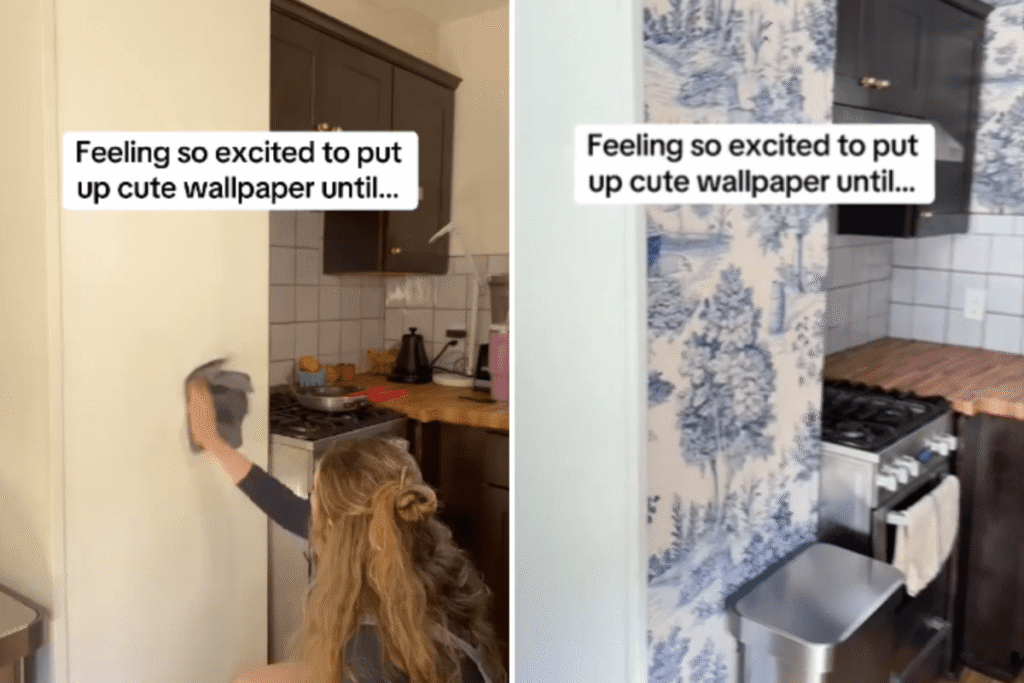When Violet Clair ordered what she thought was a charming, vintage-style wallpaper from Etsy, she couldn’t wait to transform her kitchen wall.
“The listing images were zoomed out, so it was difficult to see the details,” Clair, 39, from Upstate New York, told Newsweek. “When I installed it and had time to look closely, the uncanny elements started to stick out.”
In a TikTok clip that’s now been viewed more than 640,000 times, Clair documents her realization that the pastoral, blue-and-white wallpaper design, complete with oddly drawn chairs and plants, wasn’t the hand-drawn art she thought she was buying, but what she called “AI slop.”
“I figured it out a few hours after putting it up,” she said. “My reaction was mostly disappointment, because I had chosen the design expecting it was created by a human artist. And honestly, once you have spent hours measuring, smoothing, and trying to get the seams to line up, you want to hopefully feel good about the result.”
Clair said she plans to leave the wallpaper up for now—removing it would be another ordeal—but intends to replace it with something “made by a human artist.”
Etsy declined to comment directly when approached by Newsweek, but in a statement in their official Seller Handbook in July 2024, Etsy said: “After carefully considering the complex issues surrounding AI-generated content, we have decided to continue to allow sellers to use their original prompts in combination with AI tools to create the artwork they sell on Etsy.”
Despite this, Etsy add that: “Sellers must disclose within their listing description if an item is created with the use of AI.”
In this case, there is no indication of seller wrongdoing as it was unclear whether the seller had disclosed that the product was made with AI.
AI generated art is a growing concern in the creative world. One artist recently warned that the technology could become a “disaster” for human creativity, arguing that machine-made images risk erasing the value of original art altogether.
Others have questioned whether “true art” can exist in an era dominated by algorithms, where human imperfection and interpretation is being replaced by automated precision. As generative tools continue to blur the boundaries between craft and code, the debate over authorship and authenticity in art is intensifying.
Her TikTok, captioned “Feeling so excited to put up cute wallpaper until…,” quickly struck a chord with viewers. One commenter joked: “William Morris is rolling in his grave,” while another said: “AI, the grift that keeps on grifting.” Others took a lighter view: “It’s still cute!! But it just adds an extra talking point at parties!”
Another user suggested turning the error into an art project: “Go through with a red fine tip Sharpie and redraw the weird parts like an art teacher correcting sloppy work.”
For Clair, the viral moment isn’t just about aesthetics. She says she shared the video to raise awareness about how generative AI is creeping into everyday products—from wall art to home décor—without clear labeling.
“AI art being found on consumer goods is really uncharted territory right now,” she said. “I just wanted to help other people avoid the same mistake.”
Read the full article here


